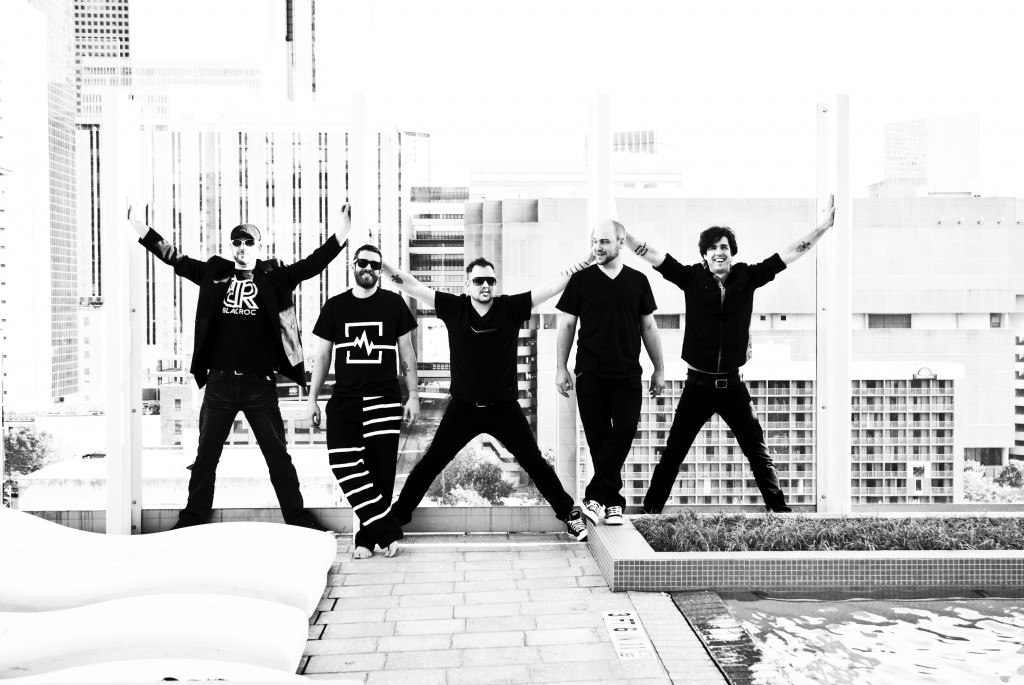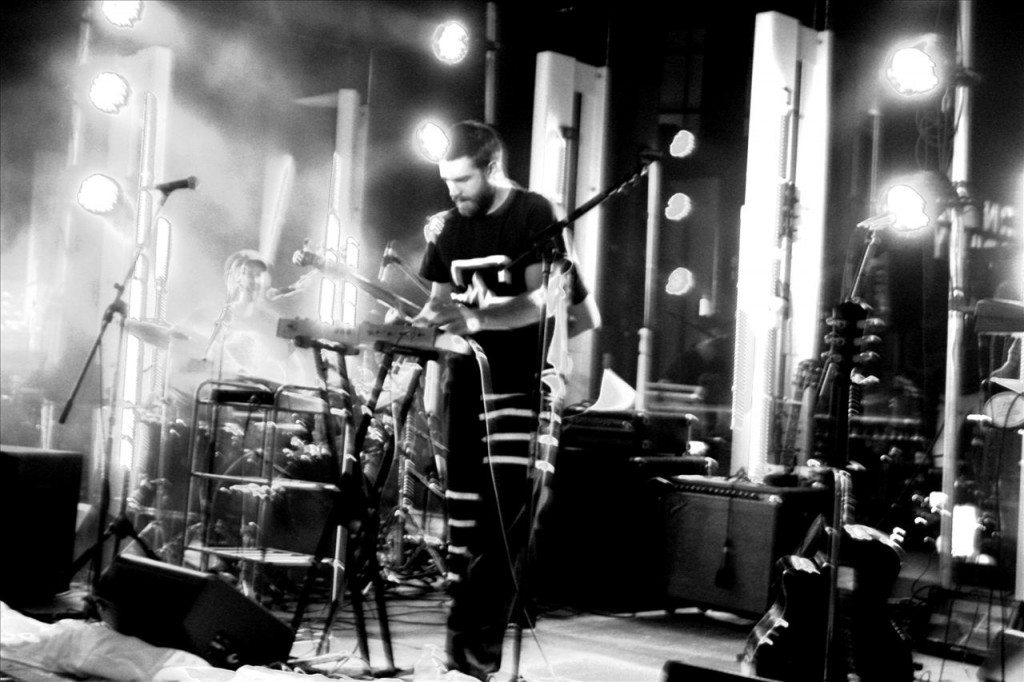
Stokeswood: In the Field of the Vibrations
This Saturday, May 21st at 10 p.m., Stokeswood returns to Miami to launch their second album, In the Field of the Vibrations, and they will perform at the The Stage in the Design District. The Atlanta-based electro-acoustic band was formed in 2004 by lead vocalist and acoustic guitar player Adam Patterson and lead electric guitarist Mark Godwin. The five-piece also comprises a drummer, keyboardist and bass player. Stokeswood’s independently released its debut album, Carassia, in 2009. Stokeswood’s second album, In the Field of the Vibrations, showcases a vocal-centric aesthetic and an array of synthesizers and guitars that are illuminated by infectious dance beats. During the course of my interview with Stokeswood, we discussed what makes the band unique and what it is like to collaboratively put an album together with so many members. We also talked about what the band likes to eat before they perform. Neil de la Flor: What does music mean to you? Stokeswood: Oxygen. ND: I love oxygen, too, but what qualities distinguish Stokeswood from other “killer electro-acoustic” rock bands? SW: Our ability to put on an intense live show that is both sonically representative of our recorded music and a separate piece of art all together certainly allows us to stand out. I think we’ve found a really unique way of blending the line between electronic and acoustic music. We cross the line so often and, in such a seamless manner, we find ourselves thinking there is no longer a line. And Adam’s incredible voice doesn’t hurt either. ND: Is there one element that unifies the sound or musicality of the band? Is it a combination? If so, how are the parts weighed and woven together? SW: What really defines a “Stokeswood” song is Adam’s voice. On our first album, Carassia, we jumped all over the board as far as genres go, and what brought it all together was his unmistakable voice. The same goes for our new album, In the Field of the Vibrations. We’ve clearly defined a style of music that we are playing, even though you could still say we jump around quite a bit. But, it is Adam’s voice that makes Stokeswood recognizably Stokeswood. As far as weighing musical parts, when writing and recording our latest album we made the decision early on to make the best piece of art possible. So, we didn’t say, “OK, all five of us need to play our main instrument on every song.” Rather, lets play what is best for each song and ultimately for the album as a whole. And that’s exactly what we did. The resulting live show has us running all over the stage switching instruments between every song in a carefully planned game of musical chairs. ND: Musical chairs, brilliant. What’s it like to work together to create an album? SW: So to basically continue where I left off, it’s tough because you have to listen to the opinion of every member in the band, and they’re naturally very different at times. Those differences usually spark other unified ideas that wouldn’t have been thought of before. In other words, it’s amazing, bewildering, frustrating and intense. ND: Are you influenced by technology or nature? How and in what ways? SW: We don’t think that it’s mutually exclusive. We are influenced by everything around us. This is especially true with In the Field of the Vibrations. We have a reoccurring theme within the album called “forest face,” which appears four times throughout the album. Not to get into my interpretations of the lyrics, for we like to leave that to the listener, the musical concept brings you from stripped-down a cappella vocals and claps to one guitar and one voice to full-on band and, finally, to just electronics and vocals — all the while introducing your ears to sounds that could be either from nature or algorithms. Again, it’s bleeding the line between electronic/technology and acoustic/nature.
ND: Can you reveal the sonic details about In the Field of the Vibrations, Stokeswood’s highly anticipated and long-overdue sophomore album? What should we expect? SW: Expect to dance, smile, think and then dance some more. ND: Who are the bands or soloists you respect and why? SW: Radiohead, because they’ve continued to try new approaches to their craft during the entirety of their career and have done so with the utmost integrity. Musical influences are the driving force of inspiration behind all the music we write. In Reed Irvine [keyboardist] words, ‘Without bands like The Notwist, The Whitest Boy Alive, Kunek, Ghostland Observatory, Brazilian Girls and many more, there is no way we would have been able to write some of the songs we did. This carries over to live performance as well. Seeing my first Ghostland set changed forever my expectations of live performance, whereas hearing Erlend Øye, lead singer/co-songwriter of The Whitest Boy Alive and The Kings of Convenience, forever changed something in me and the way I think about music when sitting down to write. About seven years ago, I started getting into electronic indie music and an album called Neon Golden by a German band [called] The Notwist. It opened my mind to an extreme, yet tactful, crossover from acoustic to electronic. Even more recently, bands like Passion Pit and Vampire Weekend helped me understand how to achieve pop sensibility without it sounding generic or overdone.’ Hopefully, we will be that influence to other bands and the cycle will continue. One other point is that we are all most influenced by the people we spend the most time with. My wife, my child and my band family are my biggest supporters and influences. Without them, everything would be without purpose. I’m lucky enough to be surrounded with a group of people that are all extremely talented musicians and writers. And the single most important influence on our music is most certainly each other.
Listen to “Understandably So” from the new album In the Field of the Vibrations.
ND: For young or old musicians who want to break into the art of electroacoustic rock, what would you suggest? SW: If you’re going to make music that gets people to lose their shell and go a little nuts out on the dance floor, don’t be too cool — break it down on stage as well. ND: Where will Stokeswood be in 10 years? SW: With the prospects of movie and commercial placement at our door, we would have to project that we’ll be everywhere. And with the exponential growth rate of technology, we may literally have the ability to be everywhere. ND: And, most importantly, what does the band eat before a performance? SW: Whatever is free.
Stokeswood at The Stage, 170 N.E. 38th St., Miami; 305.576.9577; info@thestagemiami.com.
Recent Content
-
Artsarticle ·
-
Artsarticle ·
-
Artsarticle ·


